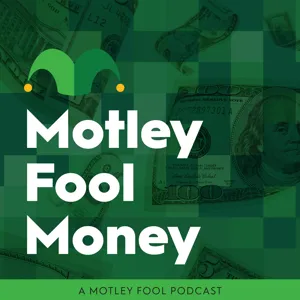Podcast Summary
The Future of Cities: Office Space and Beyond: The pandemic led to historically high office vacancy rates, but cities are reimagining their focus towards cultural centers, arts, education, and entertainment. Repurposing office space, like parking garages, is a creative solution.
The future of cities is undergoing significant changes, particularly in relation to the office space and work dynamics. The pandemic has led to an increase in remote work, resulting in historically high office vacancy rates. According to data from CoStar, the US office vacancy rate hit an all-time high of 12.9% in Q1 2023, up from under 10% prior to the pandemic. However, it's important to note that this is economic vacancy, not physical occupancy, which is even higher. The future of cities goes beyond just office space, with a potential shift towards focusing on cultural centers, arts, education, and entertainment. Experts predict that cities will need to be reimagined to accommodate these changes, and repurposing office space is a creative solution. For instance, parking garages could play a pivotal role in revitalizing urban centers. Effective communication skills are essential in navigating these changes, and the Think Fast, Talk Smart podcast, with its expert guests and practical tips, can help hone these skills. Overall, the future of cities is a defining issue of our time, and figuring out how to adapt to these changes is crucial.
Office occupancy rates remain low with significant subleased space in major cities: Major cities have office occupancy rates below 40%, with over 7% of leased space available for sublease, totaling millions of square feet from companies like Alphabet, Amazon, Meta, and JPMorgan, as companies only mandate part-time attendance and many leases are expiring soon.
Despite mandates for employees to return to the office, office occupancy rates remain low, with major cities like New York, San Francisco, and Washington D.C. seeing average occupancy rates below 40%. This trend is driven not only by under-occupied buildings but also by substantial amounts of office space being made available for sublease. For instance, in San Francisco, an estimated 7.2% of leased office space is available for sublease, totaling over 3.5 million square feet from companies like Alphabet, Amazon, Meta, and JPMorgan. Companies are urging workers to return, but most are only mandating part-time attendance, leading to less physical occupancy. Furthermore, many of these companies' leases are expiring soon, and it's unlikely they will renew them, potentially leading to even lower occupancy rates in the future.
Cities Evolving Beyond the Office: Cities may need to adapt and focus on cultural centers, arts, education, and entertainment to attract residents and maintain economic health as more people work remotely.
The traditional concept of a central business district, with its tall office buildings and bustling crowds during work hours, may be evolving as more people continue to work remotely. This shift could have significant implications for cities, particularly those that rely heavily on office-related taxes for revenue. Cities may need to adapt and focus on other aspects such as cultural centers, arts, education, and entertainment to attract residents and maintain their economic health. The pandemic has upended the way we organize work and population around cities, and it's crucial for cities to evolve and reimagine themselves beyond the office. People still want to live in cities, but they might no longer want to commute to them.
Office Space Trends Amidst Remote Work and Gig Economy: Cities face funding challenges, but office demand remains, shifting towards flexible arrangements and adaptive office spaces.
The traditional office setup and the role of cities as central hubs for business may undergo significant changes due to shifting work trends, such as remote work and gig economy, exacerbated by the pandemic. Cities might face funding challenges, potentially leading to decreased investments in public transportation and other urban projects. However, the office space demand isn't disappearing entirely; instead, it may shift towards more flexible arrangements like satellite offices, collaborative workspaces, and infrequent team gatherings. Investing in office real estate could be a risk, but there are still opportunities in adaptive, flexible office spaces and alternative uses for office buildings.
Uncertain future for traditional office REITs: Traditional office REITs face challenges from excess supply, lower demand, and debt refinancing. Specialized sectors like life sciences, healthcare, and federal government leases may fare better. Recovery will take time, with potential defaults and pressure on funds from operations. Banks may push for debt repayment if equity values decline.
The future of office real estate, particularly for traditional office REITs, is uncertain and potentially challenging due to excess supply, lower demand, and the need for debt refinancing. Older Class B buildings with fewer amenities are expected to suffer the most. However, REITs focusing on specialized sectors like life sciences, healthcare, and federal government leases may fare better. The recovery process will take time, and there will likely be defaults and pressure on funds from operations. Banks, which often hold a significant amount of debt for these buildings, may push for repayment if the equity value declines. While some markets, such as New York, were initially seen as having the most significant issues, signs of weakness are now emerging in other areas as well.
Office Real Estate: Challenges and Opportunities: Financial hubs face vacancy rates due to reduced office demand, while tech-focused markets and cities with migration see growth. Repurposing office buildings can bring new life, but it's costly and not all buildings can be converted.
The office real estate market is facing challenges due to the global shift towards remote work, but not all markets are equal. Financial hubs like Charlotte, which have a high concentration of banking tenants, are experiencing increased vacancy rates due to reduced office space demand. However, markets with a strong tech presence or those that have seen significant migration, such as Miami, Jacksonville, or Texas cities like Dallas and Austin, are likely to fare better. Repurposing office buildings into other uses like residential, vertical warehousing, edge computing, or vertical malls, could bring new life to cities and provide opportunities for real estate investors. Yet, the process is expensive and not all office buildings can be easily converted. Overall, while the office sector may not be exciting for investors in the near term, there are opportunities in other real estate sectors, and creativity in repurposing office buildings could bring new energy to urban areas.
Barriers to repurposing office buildings into mixed-use properties: Outdated zoning and high parking requirements hinder the transition of office buildings into versatile mixed-use developments. Collaboration between public and private sectors, reduced parking requirements, and public-private partnerships can open up opportunities for repurposing urban spaces.
Outdated zoning regulations and high parking requirements in cities pose significant barriers for developers looking to transition traditional office buildings into more versatile, mixed-use properties. This includes vertical warehousing, retail, hotel, and other types of developments. To make these transitions happen, there needs to be a collaborative effort between the public and private sectors to rethink city design and zoning. Reducing parking requirements and exploring public-private partnerships could open up more development opportunities and make cities more livable. Additionally, the potential for repurposing urban parking spaces into data centers or other uses is an intriguing prospect for the future.
Cities of the Future: Prioritizing Efficiency and Sustainability: Cities may reduce excess parking spaces, integrate autonomous vehicles and public transportation, and adopt the 15-minute city concept to create livable urban environments that are more efficient, enjoyable, and sustainable.
Cities of the future may prioritize the reduction of excess parking spaces and the integration of autonomous vehicles and public transportation to make urban living more efficient, enjoyable, and sustainable. The 15-minute city concept, which emphasizes accessibility to essential services within a 15-minute radius without a car, is gaining popularity and aligns with the preferences of younger generations. By reallocating parking space and promoting walkable, bikeable, and scooter-friendly cities, we can create livable urban environments that are more appealing and convenient for residents. The shift towards autonomous driving and public transportation, along with the 15-minute city concept, can lead to a more connected, efficient, and sustainable urban future.
The potential of vertical farming in urban living: Vertical farming in cities could offer reduced transportation costs and increased food security, but questions remain about practical implementation given current infrastructure.
The future of urban living could involve vertical farming as a solution to address food production challenges in cities. However, there are questions about whether this can be realistically implemented given our current infrastructure. Despite these queries, the potential benefits of vertical farming, such as reduced transportation costs and increased food security, make it an appealing prospect for city planning. As a reminder, The Motley Fool may hold positions in the stocks discussed and individuals on the program may have personal investments. Always do your own research before making investment decisions.






